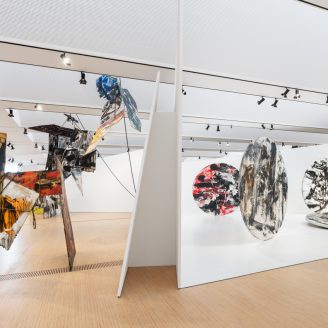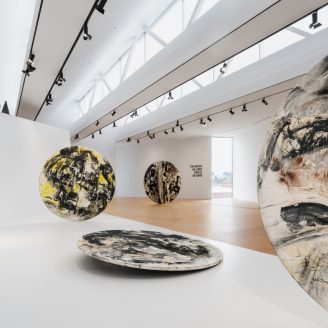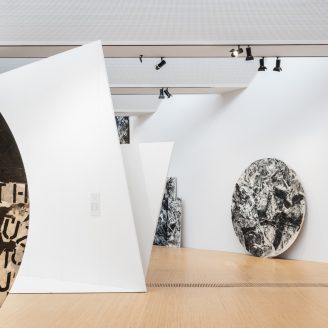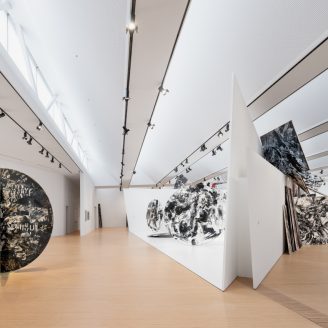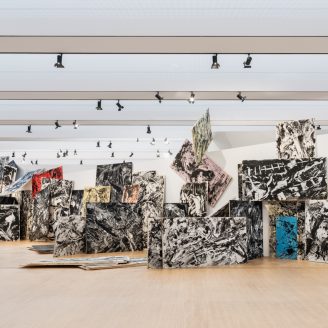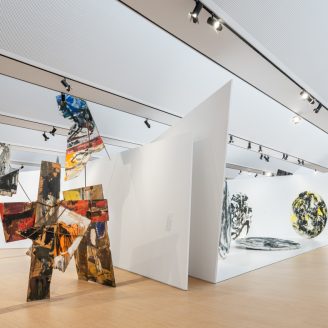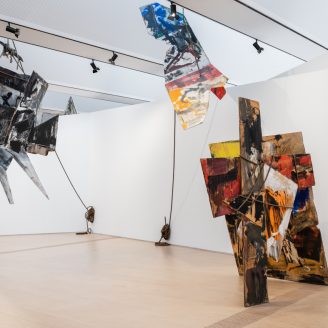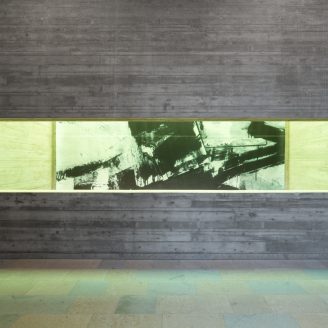At the M9-Museum of the 20th Century Alvisi Kirimoto designs the setting of the great exhibition “Rivoluzione Vedova“, devised and designed by the Fondazione Emilio e Annabianca Vedova, curated by Gabriella Belli. It will be open to the public from 5 May to 26 November 2023.
It is an immersive exhibition dedicated to the influential artist Emilio Vedova and the project’s originality starts with the special shape of the room: an asymmetrical space of over 1200 sqm with extraordinary light, which descends from the museum’s shed roof.
In line with the curator’s request to define three distinct areas, the architect Massimo Alvisi explains:
“Like a large “splinter”, the central structure defines the three scenarios linked to the cycles of works on display, which are among the fundamental masterpieces of the artist: …in continuum, compenetrazioni/traslati ’87/’88; the Plurimi of the Absurdes Berliner Tagebuch ’64; the Dischi and Tondi; while the works on the wall, associated with particular historical moments of the 1900s, are intended as seals, as accents, which narrate the war conflicts in which Vedova participates vigorously.”
The “splinter” is a complex structure, made up of three folded and asymmetrical sheets that split the space and shape its profile. The flaps are detached from each other to let the gaze filter through the joints, and to read the structure as a single articulated element, a real work tool. The “splinter”, therefore, simultaneously separates and connects the areas, to showcase the cycles of works on display and the subtle network of relationships between them.
Much more than a mere container, the main room hosting the exhibition, with its irregular plan and its generous openings, underlines the link between the works and the city and amplifies the urban nature of the installation, enhancing the disruptive work …in continuum, compenetrazioni/traslati ’87/’88.
The second area hosts the Plurimi from the Absurdes Berliner Tagebuch ’64 cycle, composed of seven elements made with hinged structures, two of which are suspended and invade the space. The surfaces of the “splinter” that enclose this area have a slight inclination on the vertical axis which expands the reference area, creating spatial tension and dialoguing with the dynamism of these irregular works rich in chromatic stratifications.
The third section, on the other hand, is dotted with the presence of the Dischi, which float in space, and the Tondi, lying on the ground or hanging from the “splinter”. Thanks to their multiple positions, visitors can enter the path defined by these large circular canvases and by the three surfaces that delineate the space. At the end of the labyrinth of pieces, slightly detached from the rest, stands Chi brucia un libro brucia un uomo, the work linked to the Sarajevo library fire in 1992, which is of very strong symbolic value.
The exhibition is accessed via the corridor on the second floor, designed as an introductory space in which to explore the figure of Emilio Vedova and the related period.
The exhibition itinerary designed by Alvisi Kirimoto once again underlines the central role of the artist in contemporary art, celebrating his permanent topicality.


